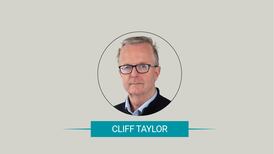In 1996 in the wake of the hysteria caused by the murder of Veronica Guerin, the Oireachtas passed a piece of legislation about which there has been much self-congratulation on the part of its initiators: the Criminal Assets Bureau Act, 1996, writes Vincent Browne
Part of Section 4 of that Act provides that the objectives of the bureau shall be "(a) the identification of the assets, wherever situated, of persons which derive or are suspected to derive, directly or indirectly, from criminal activity, (b) the taking of appropriate action under the law to deprive or to deny those persons of the assets or the benefit of such assets, in whole or in part, as may be appropriate . . ."
Section 5 of the Act states that the functions of the bureau shall be "the taking of all necessary actions (a) in accordance with Garda functions, for the purposes of the confiscation, restraint of use, freezing, preservation or seizure of assets identified as deriving, or suspected to derive, directly or indirectly, from criminal activity, (b) under the Revenue Acts or any provision of any other enactment, whether passed before or after the passing of this Act, which relates to revenue, to ensure that the proceeds of criminal activity or suspected criminal activity are subjected to tax and that the Revenue Acts, where appropriate, are fully applied in relation to such proceeds or activities, as the case may be."
Now we know for a certainty that some of the assets of AIB were derived from criminal activity, those derived from the deliberate and planned fraud over the DIRT tax. We have reason to suspect that further assets were derived from other criminal or dubious activity, those derived from the scam on foreign exchange and the mortgage protection caper. We now know also that AIB remunerated its senior executives in part through a further tax scam, thereby generating assets for itself (one assumes that the beneficiaries of that tax fiddle contributed to the bank's assets in part because of that illegal remuneration).
So where is the Criminal Assets Bureau? If this much vaunted institution, copied, we are asked to believe, in several other jurisdictions, is such an effective instrument in the detection and prevention of crime, why are the sturdy boots of officers of that body not tramping around the plush carpets of the top floors of AIB bank centre this morning?
It's not as though this outfit has been embarrassed by a once-off misdeed. This is part of a long-standing pattern of conduct. It would be excessive to characterise AIB as a criminal conspiracy, but that pattern has been so long-standing and so persistent that one is entitled to suspect that there is criminality in the bank's ethos.
The Irish people are entitled to feel a special anger with AIB and for the following reason.
In 1985, in a state of great anxiety, members of the board of AIB rushed around to Government Buildings to tell the minister for finance, Alan Dukes, and the minister for industry and commerce, John Bruton, that the bank was in crisis because of the collapse of the Insurance Corporation of Ireland (ICI), which it had recklessly purchased and then even more recklessly managed.
Bruton and Dukes in turn rushed around to the sickbed of the taoiseach, Garret FitzGerald, on St Patrick's Day 1985, and, in panic, they agreed the State should take over ICI along with its liabilities, then estimated at between £50 million and £120 million.
It has never been clear why they agreed to do that or why, if it was necessary, they did not demand a shareholding for the State in AIB in return. AIB's profits in 1984 and 1985 were well in excess of the ICI liabilities. So brazen was AIB even in those desperate days that it insisted on paying a substantial dividend to its shareholders in the year of the ICI crisis. John Bruton insisted the State bail-out was the "responsible" thing for the government to do, even in the face of the dividend pay-out.
Tomás Mac Giolla, then a Workers' Party TD, said: "I find that when people are being responsible it means that they are standing by the big boys in some place or other."
Members of that coalition government (1982-87) insist that the banks ultimately funded that bail-out. Not true. Garret FitzGerald's economic adviser, Patrick Honohan, has since shown in an academic paper that the State paid £18 million in 1985 money terms, which is in the region of €80 million nowadays.
In the year after that bail-out, 1986, the deposit interest retention tax (DIRT) was introduced. And in the succeeding several years AIB, which had sought and received a massive bail-out by the State in 1985, cheated the State to the tune of roughly £130 million. The Revenue Commissioners let them get away with it for years.
As time goes by you have to have more and more admiration for Charles Haughey. He was the only one who treated AIB in the way it should be treated. When they demanded repeatedly from 1974 to 1980 that he stop running up a massive overdraft and repay the money he had obtained from them, he told them what to do with themselves. We need a bit more of that kind of leadership nowadays.








